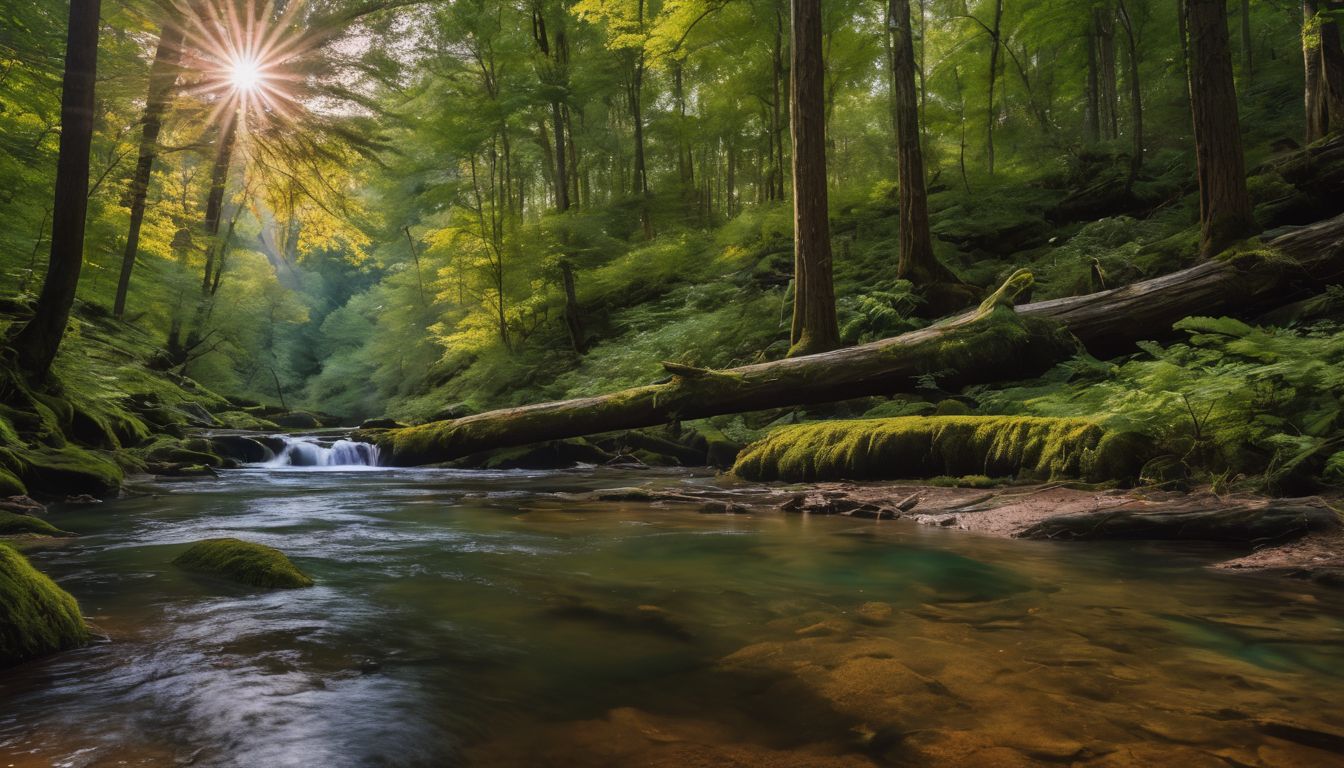Our parks, forests, beaches, and protected wilderness areas are national treasures for us to enjoy. Henry David Thoreau once said, “In wilderness is the preservation of the world.”1 Spending time outdoors is a unique way to support and savor our pristine natural areas. However, during camping season, the great outdoors can suffer from a large amount of human abuse. The biggest problems caused by camping are littering and vandalism, followed closely by irresponsible burning and the devastation of native species. Although many campers are conscious of picking up their waste or cleaning up their campsite when they leave, some may forget that anything brought with them will have an impact on the surrounding environment. When camping, always remember that it is equally as important to protect the natural environment as it is to enjoy it.
Fortunately, because of the concern of the cumulative effect of thousands of visitors to our natural areas over time, a greener approach to camping is becoming increasingly popular. Aside from stocking up on environmentally friendly camping gear and goods, the “Leave No Trace” model was created to provide a cohesive set of principles to learn and practice while on your next camping trip. For more on the “Leave No Trace” model and eco-tourism, check out this Greeniac Guide.
BENEFITS for the Environment: High
COST: Minimal
TIME and EFFORT: Medium. Once you learn the principles of “leave no trace” while camping, the time and effort is minimal.
GETTING STARTED:
Before you decide to green your camping experience, it is essential to review the principles created by Leave No Trace—as many campgrounds now require you to follow them. According to www.lnt.org, “Leave No Trace is a national and international program designed to assist outdoor enthusiasts with their decisions about how to reduce their impacts when they hike, camp, picnic, snowshoe, run, bike, hunt, paddle, ride horses, fish, ski or climb. The program strives to educate all those who enjoy the outdoors about the nature of their recreational impacts as well as techniques to prevent and minimize such impacts.”2
The Principles of LEAVE NO TRACE include:
Plan Ahead and Prepare
• Know the regulations and special concerns for the area you’ll visit.
• Prepare for extreme weather, hazards, and emergencies.
• Schedule your trip to avoid times of high use.
• Visit in small groups when possible. Consider splitting larger groups into smaller groups.
• Repackage food to minimize waste.
• Use a map and compass to eliminate the use of marking paint, rock cairns or flagging.
Travel and Camp on Durable Surfaces
• Durable surfaces include established trails and campsites, rock, gravel, dry grasses or snow.
• Protect riparian areas by camping at least 200 feet from lakes and streams.
• Good campsites are found, not made. Altering a site is not necessary.
• In popular areas: Concentrate use on existing trails and campsites, Walk single file in the middle of the trail, even when wet or muddy. Keep campsites small. Focus activity in areas where vegetation is absent. In pristine areas: Disperse use to prevent the creation of campsites and trails, Avoid places where impacts are just beginning.
Dispose of Waste Properly
• Pack it in, pack it out. Inspect your campsite and rest areas for trash or spilled foods. Pack out all trash, leftover food, and litter.
• Deposit solid human waste in catholes dug 6 to 8 inches deep at least 200 feet from water, camp, and trails. Cover and disguise the cathole when finished.
• Pack out toilet paper and hygiene products.
• To wash yourself or your dishes, carry water 200 feet away from streams or lakes and use small amounts of biodegradable soap. Scatter strained dishwater.
Leave What You Find
• Preserve the past: examine, but do not touch, cultural or historic structures and artifacts.
• Leave rocks, plants and other natural objects as you find them.
• Avoid introducing or transporting non-native species.
• Do not build structures, furniture, or dig trenches.
Minimize Campfire Impacts
• Campfires can cause lasting impacts to the backcountry. Use a lightweight stove for cooking and enjoy a candle lantern for light.
• Where fires are permitted, use established fire rings, fire pans, or mound fires.
• Keep fires small. Only use sticks from the ground that can be broken by hand.
• Burn all wood and coals to ash, put out campfires completely, then scatter cool ashes.
Respect Wildlife
• Observe wildlife from a distance. Do not follow or approach them.
• Never feed animals. Feeding wildlife damages their health, alters natural behaviors, and exposes them to predators and other dangers.
• Protect wildlife and your food by storing rations and trash securely.
• Control pets at all times, or leave them at home.
• Avoid wildlife during sensitive times: mating, nesting, raising young, or winter.
Be Considerate of Other Visitors
• Respect other visitors and protect the quality of their experience.
• Be courteous. Yield to other users on the trail.
• Step to the downhill side of the trail when encountering pack stock.
• Take breaks and camp away from trails and other visitors.
• Let nature’s sounds prevail. Avoid loud voices and noises.
Once you have mastered a good understanding and practice of Leave No Trace, you can continue greening your camping experience by investing in green camping gear. Obviously it is not necessary to consume new goods if you already have functional gear, but if you are in the market for new stuff, there are many options to go green.
- Rent or buy used gear: You can save energy and resources by not creating a demand for new products! To rent, click here. Or find used gear, here.
- Choose rechargeable products and shed the batteries: There are many options for solar powered and/or LED powered flashlights, radios, chargers, etc. For a list of products, click here.
- Choose a Natural Insect repellent: You can rid mosquitoes and other pests without adding toxins into the environment.
- Buy or Greeniacs Guide.
- this Greeniacs Forum.
- For other gear, including recycled backpacks, tents, sleeping bags, etc, check out REI.com for a generous list of ideas.




